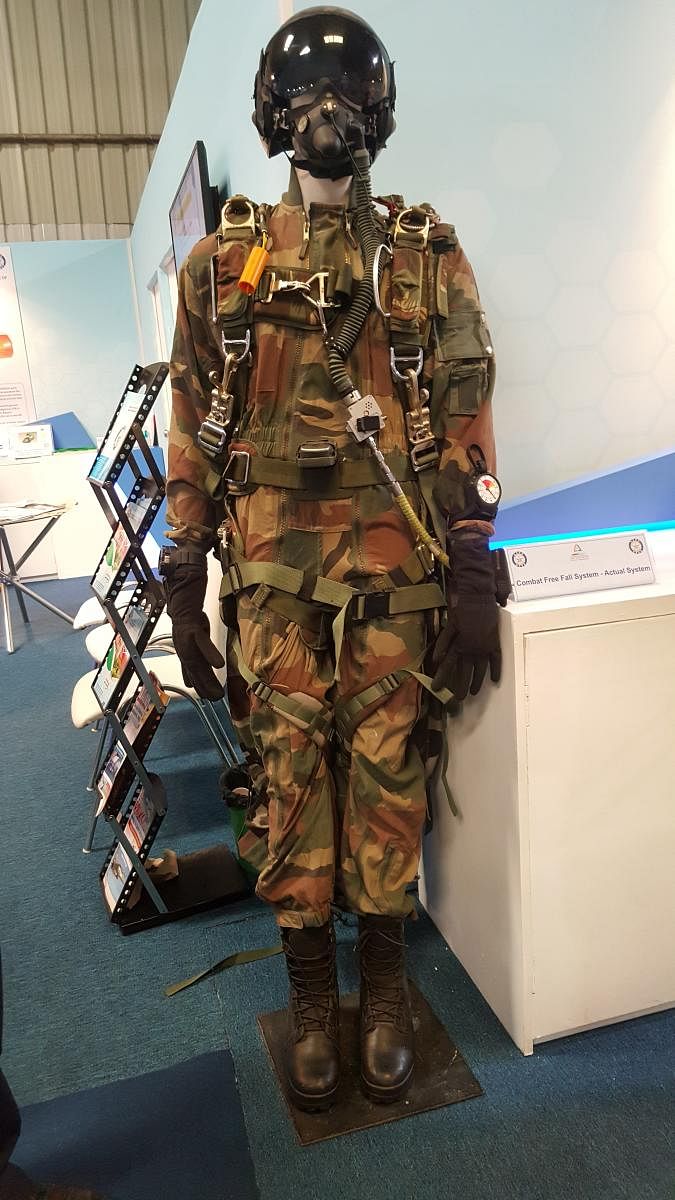Jawans on a surgical strike mission gets para-dropped from a height of 30,000 ft. How do these paratroopers survive the 20-minute free fall in biting cold? An answer lay in the ‘Combat Free Fall System’ (CFF) showcased at the ongoing Aero India 2019.
Jointly developed by two Defence Research and Development Authority (DRDO) labs, the CFF has two parachutes attached to the suit.
“If the main parachute does not open in time, the reserve one will unfold. If the paratrooper becomes unconscious for some reason, the parachute opening will switch to automatic mode,” explained an official.
The suit is fitted with devices to measure altitude, GPS navigation devices, a compass and weapons tucked near the boots in protective clothing. But what makes it even smarter is the lift to drag ratio of 3.3:1. “This means, by the time the paratrooper falls 1 km, the suit will move him 3.3 km forward, gliding.”
Jointly developed by the city-based Defence Bioengineering and Electromedical Laboratory (Debel) and Aerial Delivery Research & Development Establishment (ADRDE), Agra, the System’s technology has been transferred to the Ordnance Parachute Factory in Kanpur.
General staff evaluation of the System has been completed and recommended for production. It will be delivered to the Army later, an ADRDE official told DH.
“The CFF System will be very effective in an operation such as the surgical strike, which requires the troops to be quickly para-dropped and taken back,” he added.
Also fitted into the System is a Personal Bail-out Oxygen System (PBOS). The one-litre capacity PBOS can help the paratrooper breathe freely during the free fall from 30,000ft to Ground Zero. Besides a helmet-mounted communication system, equipment carrier bag and jump boots, the System has a battery-operated heater to keep the trooper’s arms warm.
The System can be used in High Altitude High Opening (HAHO) and High Altitude Low Opening (HALO) modes, both manoeuvres defined in the para jumping manuals.
